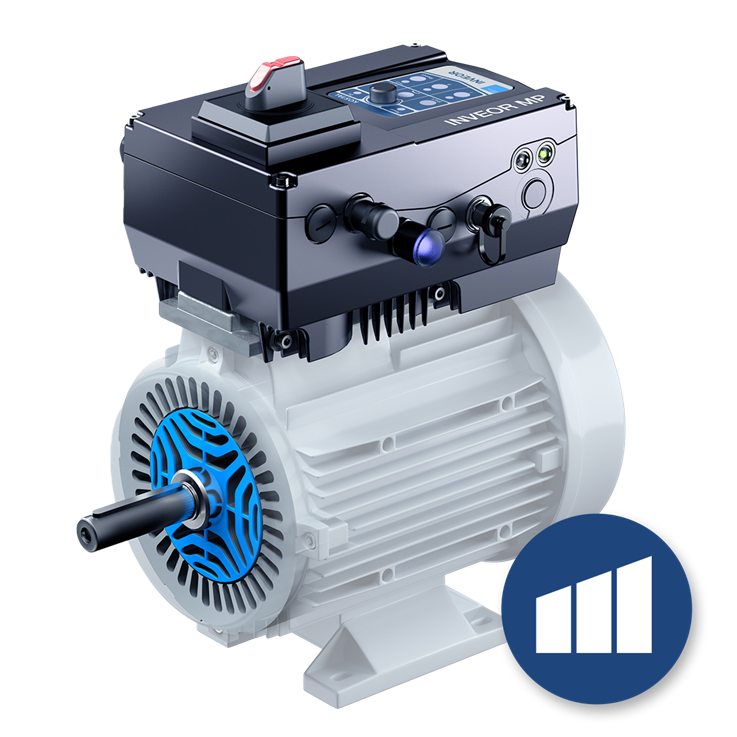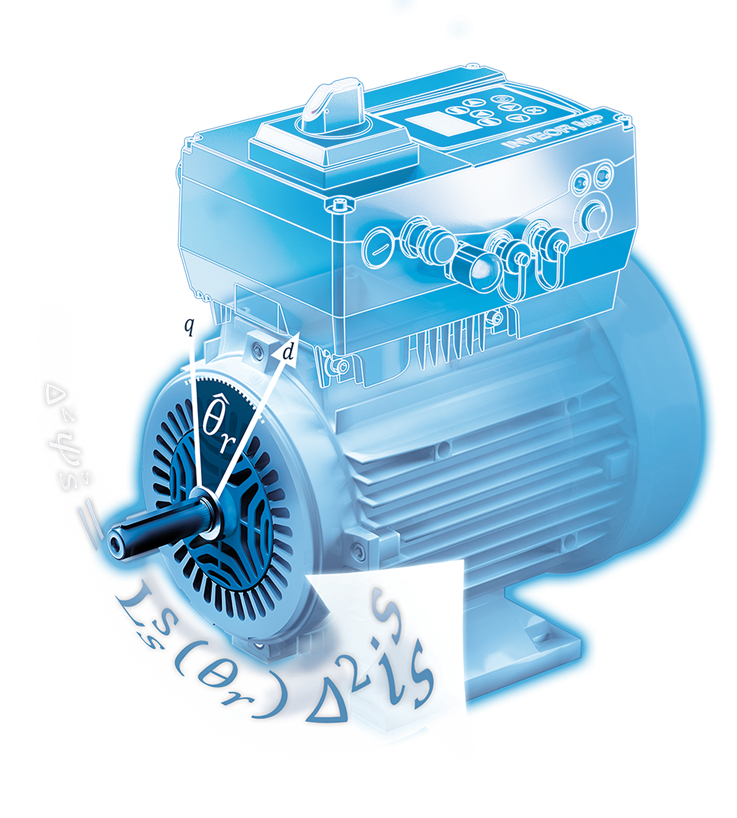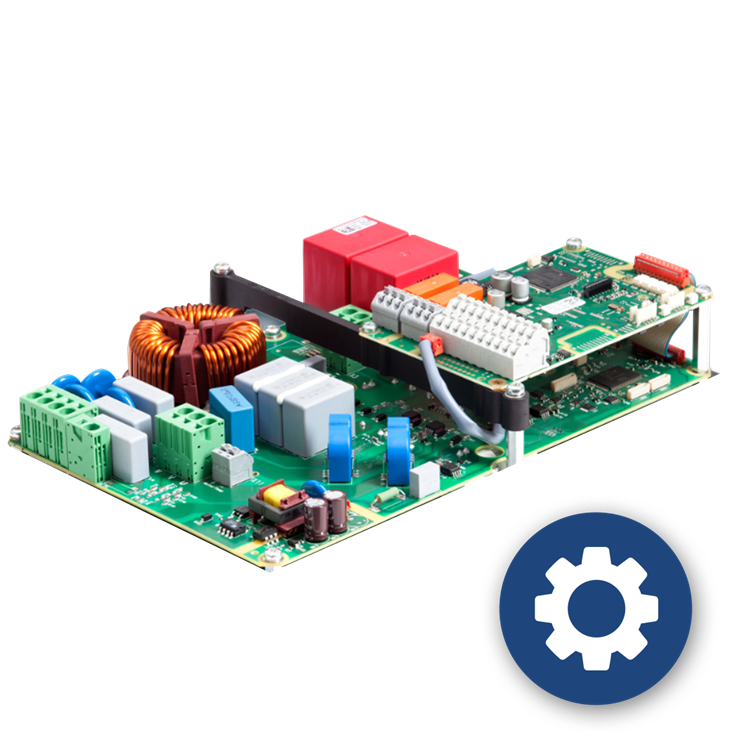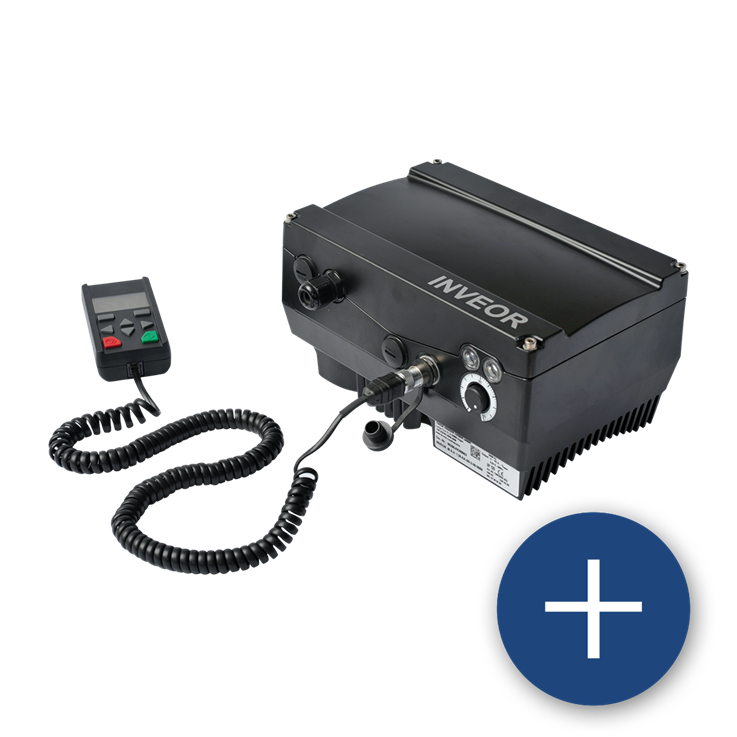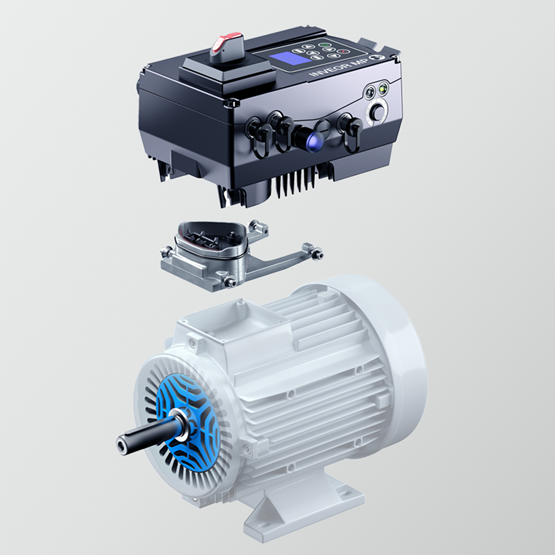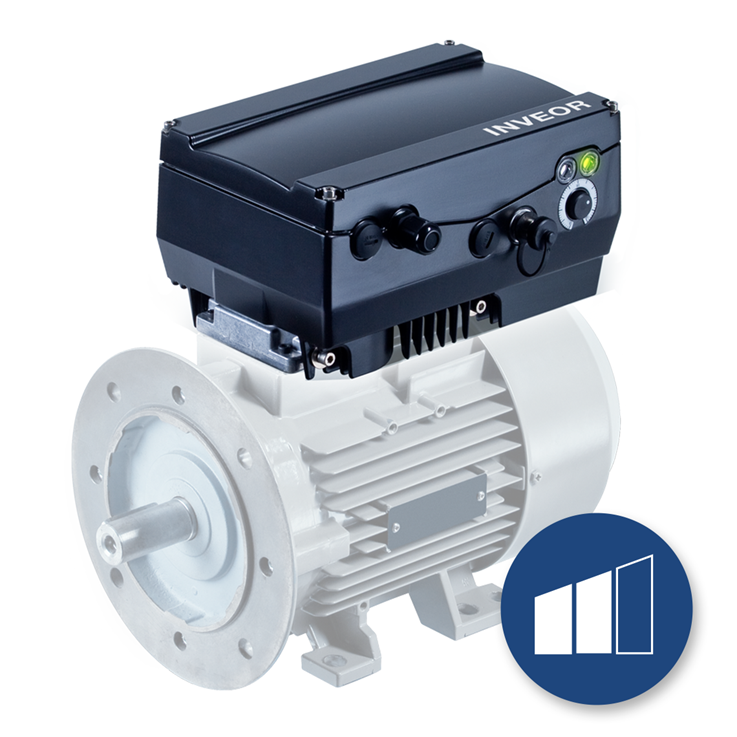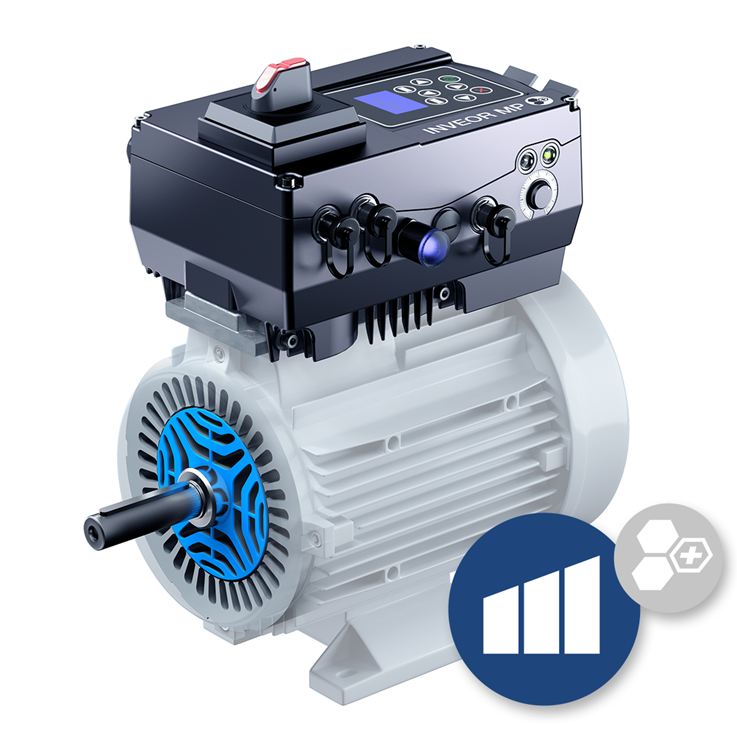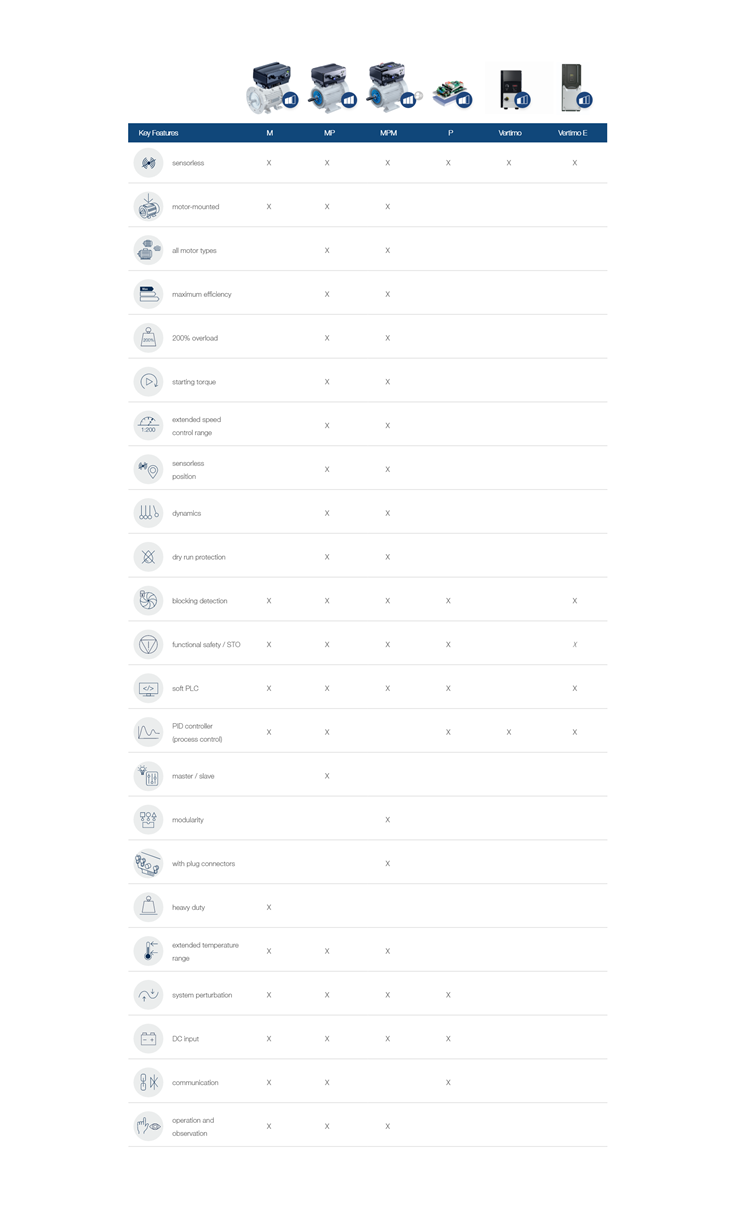Variable frequency drives come in many variants and with a wide range of performance parameters. For a rough overview, we recommend dividing them into the following categories:
- Control cabinet units
- Wall-mounted variable frequency drives
- Motor-mounted variable frequency drives
All three categories have different characteristics. So that you know which type is best for you and your company, we have provided a few explanations below.
Frequency inverters mounted in control cabinets
Frequency inverters in control cabinets are among the most commonly found variable frequency drives. With these, the drive controller is located in a control cabinet at some distance from the motor environment and is connected to the motor via a cable. The variable frequency drive controls torque and other parameters via this connection.
A major advantage of this technology is that all frequency inverters are centrally accessible in one place and away from the motor environment that may be harmful to the variable frequency drive. However, suspension in a control cabinet may lead to increased temperatures, meaning that electrical climate control may be necessary. This in turn increases energy consumption and costs.
Sometimes this involves long cable runs from the frequency inverter to the three-phase motor, which may also increase the risk of electrical interference and EMC values.
Wall-mounted frequency inverters
Wall-mounted frequency inverters are located in close proximity to the motor. They therefore have shorter cable connections than the frequency inverters mounted in control cabinets, but are still outside a potentially damaging production environment. Since heat does not build up they also do not require external climate control, unlike the control cabinet scenario, so they help to save electricity.
Another advantage of wall-mounted frequency inverters is that they are less susceptible to interference resulting from the shorter cable connection. At the same time, this translates into less installation work and a clear, uncluttered look.
Examples of wall-mounted variable frequency drives are our KOSTAL VERTIMO products. You are welcome to find out more about this type of drive controller and click on the link to access the relevant product page.
- KOSTAL VERTIMO: Our wall-mounted drive controller if you want easy commissioning. Learn more now.
- KOSTAL VERTIMO E: Our wall-mounted drive controller with a high motor rating. The perfect frequency inverter for use with fans and pumps. Learn more now.
Motor-mounted variable frequency drives
Motor-mounted variable frequency drives are mounted directly on the respective three-phase motor. There is therefore no need whatsoever for annoying cables and heat-generating control cabinets. This ensures the greatest possible flexibility, which is why this type of variable frequency drive can also be described as an all-rounder in terms of its mode of operation.
Due to their decentralised connection method, motor-mounted frequency inverters also accommodate a wide range of technologies: From various interfaces for the respective fieldbus systems to Bluetooth for setting up using an app. This makes variable frequency drives of this type, such as our KOSTAL INVEOR family, the ideal choice if you value the greatest possible flexibility and wide-ranging application options.
KOSTAL INVEOR motor-mounted variable frequency drives: Vibrations? No problem
An important criterion for motor-mounted drive controllers has always been robustness. This is because they are mounted in close proximity to fast-rotating motor components. In the past, the resulting continuous vibration used to damage the sensors responsible for determining the rotor position within the motor.
However, here at KOSTAL, we were able to solve this problem with the new patented pulse injection process. Because the motor-mounted variable frequency drives of our INVEOR family no longer have any sensors.
The pulse injection process in our INVEOR drive controllers now handles the task of determining the rotor position, which was previously the job of the encoder. This is a particularly important task, because only if you know where the rotor is located can you control the motor perfectly.
Thanks to this process, the rotor can now also be determined in close proximity to the motor and without ongoing maintenance and repairs. This is an important step towards flexibility, which enables you as a user to meet the requirements of the Ecodesign Directive and save money at the same time.
Discover our motor-mounted variable frequency drives from the KOSTAL INVEOR family today:
- KOSTAL INVEOR M: Our robust, mid-range, motor-mounted drive controller. Supports motors up to efficiency class IE4. Learn more now.
- KOSTAL INVEOR MP: Our motor-mounted variable frequency drive from the Performance class. Supports all motor types up to efficiency class IE5. Learn more now.
- KOSTAL INVEOR MP Modular: Our Modular Performance drive controller for the extended speed control range. Individual modifications make it possible to fit the products perfectly into your company. Learn more now.
- KOSTAL INVEOR P: Our cold plate drive controller without its own housing. For seamless integration into your application.
If you are wondering whether it is also possible to connect a motor-mounted frequency inverter to your motors: The versatile adapter plates from KOSTAL provide the answer – yes and with ease. For any type of three-phase motor.
